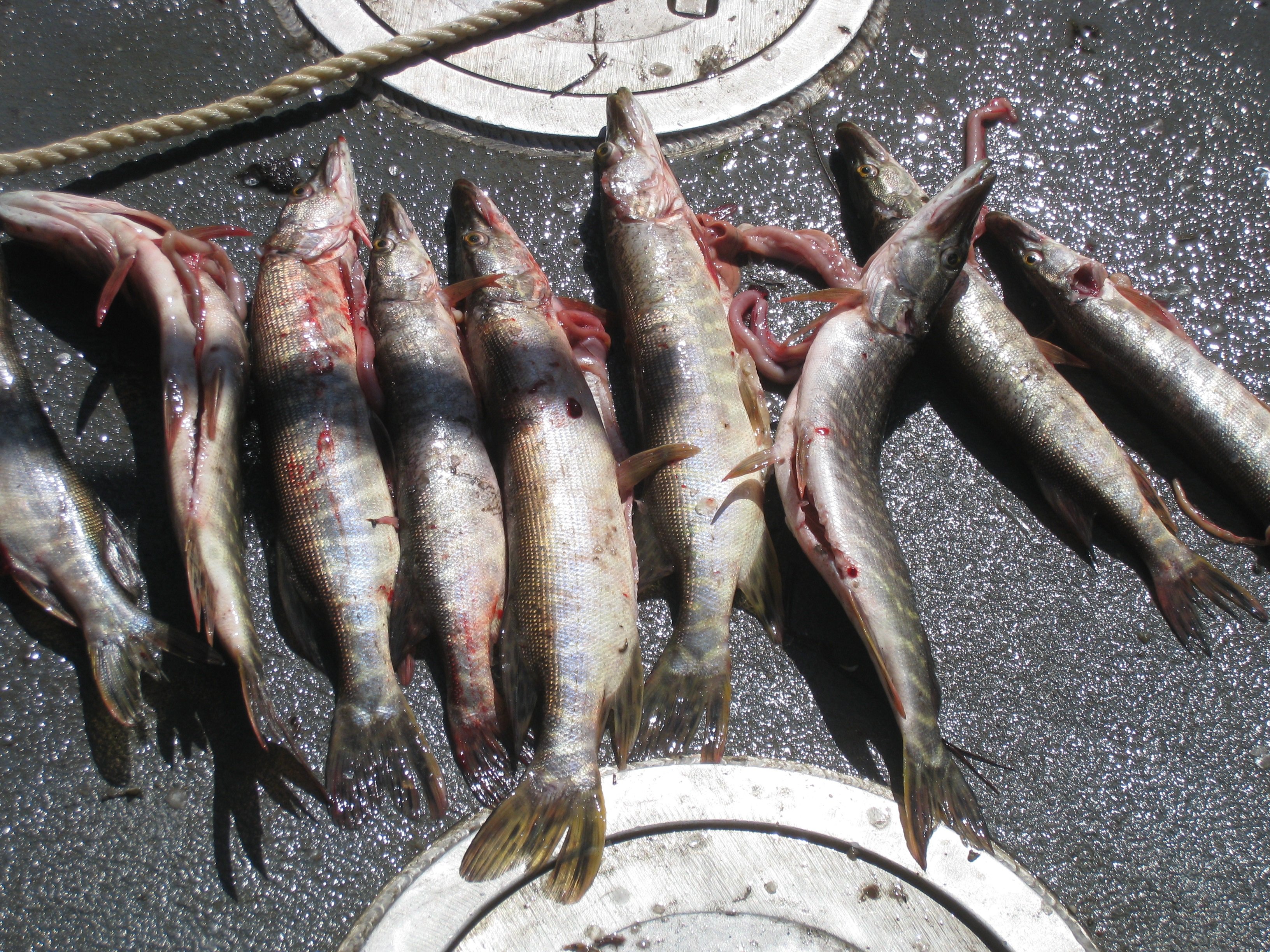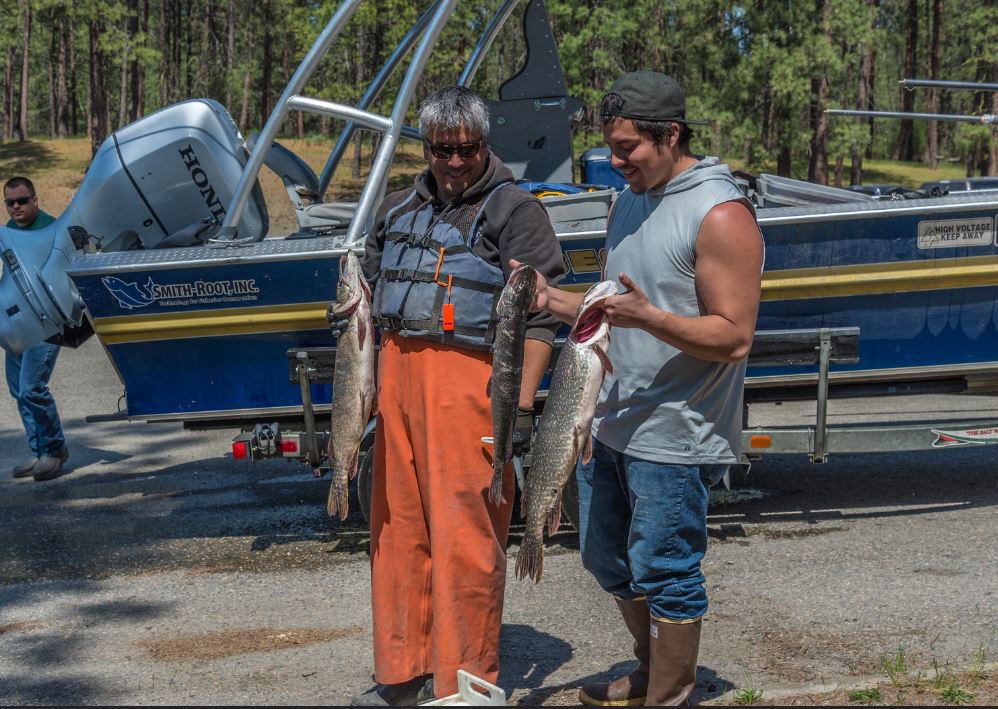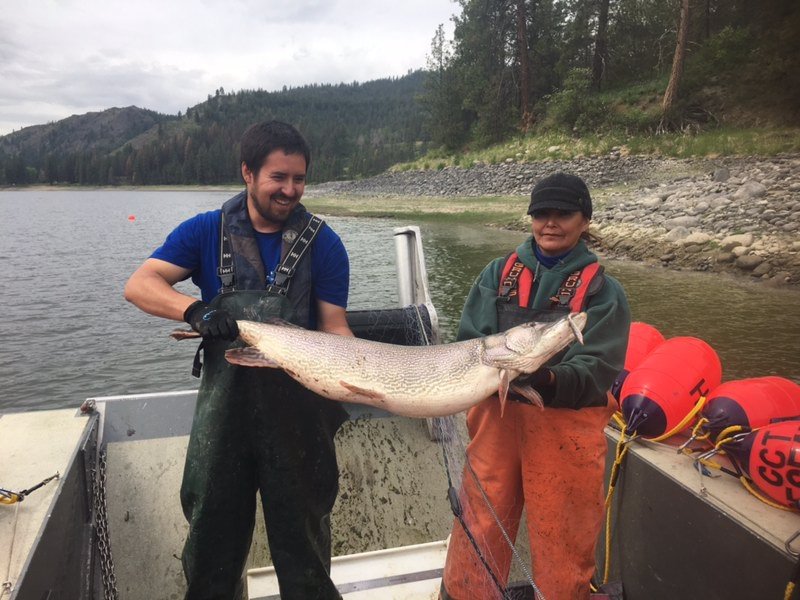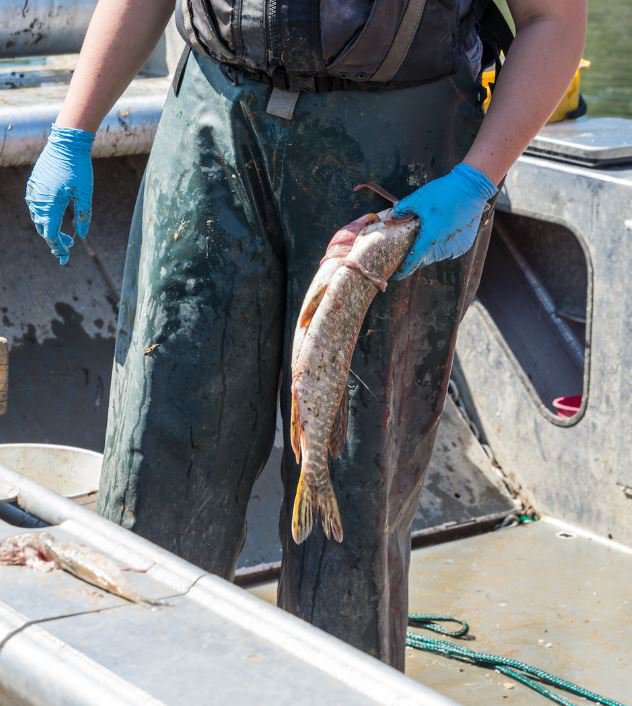Northern Pike Could Be Devastating to Salmon and Steelhead, Scientists Warn in Report on Predation
- May 14, 2019
- John Harrison
Northern Pike, an aggressive, invasive species that has taken hold in Lake Roosevelt, the reservoir behind Grand Coulee Dam, are likely to spread downriver below Grand Coulee and Chief Joseph dams, causing havoc among salmon and steelhead populations, including endangered species, according to a report to the Council from an advisory panel of 11 independent scientists. In the worst case, if salmon and steelhead “have no refuges from predation (i.e., habitats that are unsuitable for pike), pike are likely to reduce salmonid numbers and cause salmonid populations to collapse,” the report says.

The sobering report responds to questions posed by the Council to the Independent Scientific Advisory Board last November (ISAB). Members of the ISAB are appointed jointly by the Council, NOAA Fisheries, and the Columbia River Inter-Tribal Fish Commission. ISAB member Dr. Stan Gregory, an emeritus professor fisheries at Oregon State University, discussed the report with the Council at its May meeting in Boise.
The Council’s questions were about predation impacts on fish throughout the Columbia River Basin, including predators such as sea gulls, Caspian terns, smallmouth bass, walleye, sea lions and harbor seals. While the panel’s most dire warning and call for action regarded Northern Pike, Dr. Gregory also wanted the Council to understand that species can’t be controlled or reduced in isolation. Predation is a complex issue, he said, and efforts aimed at one species could have, and most likely will have, impacts on other species, including the connections and interactions among species and the habitats where they live, despite the well-meant intentions of humans.
Northern pike likely cannot be eradicated, the scientists said. But a determined effort of detection, removal and, over time, a form of genetic intervention that would reduce successful spawning could slow the spread substantially.
Since at least 2007, Northern Pike have been emigrating naturally downstream toward and into the upper end of Lake Roosevelt from infested tributaries farther upstream. Recently they have been found just 10 miles upriver from the dam, meaning they have spread nearly 150 miles through the reservoir. The fish also have been introduced illegally by anglers, as pike fight hard on the line and are fun to catch. But the biological damage can be overwhelming. Once established, which can happen quickly, the voracious fish eat everything they can find, including fish more than half their size. There even have been reports of pike eating mice and, in one case, a bat. Biologists fear the impacts on native fish like trout, bull trout, and sturgeon, as well as walleye and bass.

The old adage that the best offense is a good defense is particularly astute regarding Northern Pike. A management and monitoring plan is needed, one that can be put in place quickly if the infestation accelerates, Dr. Gregory said. A public information website could be used effectively to warn people not to transfer invasive species from infested waters to non-infested waters. Dam operations could be changed to reduce the risk of pike being entrained over dam spillways, and laws could be strengthened to increase the fine for transferring an invasive species. “Right now, the chance of getting caught is low, and the fines are low,” he said. “So the risk is low, too.”
Eradicating nonnative predators is unlikely in a river as large as the Columbia. But one promising development is raising pike in a hatchery with two Y male sex chromosomes. While YY male fish could mate, because they lack the female X chromosome they could only produce male offspring. With fewer and fewer female fish, eventually the population would decline and possibly perish. Gregory estimated it would take 12 years to produce viable YY males in a hatchery, and another eight years to begin to accomplish the purpose. Thus it would take 20 years to show progress, but it is doable, he said.
In response to other questions posed by the Council:
- A system-wide, ecosystem-based approach for assessing and managing fish, avian, and marine mammal predators collectively … would allow managers and policymakers to identify (a) locations where life stages of prey species are most susceptible to different predators and (b) the relative benefits of decreasing salmonid mortality at different life stages, making control efforts more biologically and economically effective.
- A portfolio of approaches (including hydrosystem management, habitat restoration, as well as predator control) for reducing mortalities of salmon and steelhead will likely provide the most biologically effective and cost-effective predator management alternative.
- Ranking impacts of the predators cannot be accomplished without an ecosystem approach to assess their basinwide impact. The ISAB compiled a table of the major predators and categorical values of high, intermediate, and low vulnerability of salmonid prey. The table illustrates that seasonal timing of adult salmon and steelhead returns and differences in body size affect vulnerability of salmonid species and runs.
- After 28 years of Northern Pikeminnow removal from the Columbia and Snake rivers, direct estimation of the benefits for salmon and steelhead is needed. Targeted efforts to remove pikeminnow near forebays and tailraces of dams might more effectively reduce pikeminnow predation.
- Abundance index values of smallmouth bass in most of the sampling areas during summer have generally increased over time. For some areas, abundance index values calculated for 2017 were the highest observed since 1991.
- Fish and wildlife agencies in the basin should actively educate the public on the importance of controlling the distribution of non-native predators, such as walleye. Regulations should be enforced. Fines and penalties should be major disincentives for illegally transferring non-native fish between water bodies.
- Predation by marine mammals, especially harbor seals, on juvenile salmonids has not received adequate attention. More thorough evaluation of the biological and social outcomes of lethal removal of sea lions will better inform decisions.

Assault on Pike
In one week, May 6-10, 2019, the Spokane and Colville tribes blitzed Lake Roosevelt, the Columbia River impounded behind Grand Coulee Dam, looking for Northern Pike. The tribes set gillnets a total of 475 times and captured 439 pike, which they removed from the lake and killed.
The tribes and the Washington Department of Fish and Wildlife are working aggressively to reduce the population of the voracious predator before the species does more damage to other fish, including rainbow trout, bull trout, and others.
Members of the Power and Conservation Council were invited along to observe the fishing and ask questions of the fishers and tribal authorities.
In recent years the tribes have removed about 2,000 Northern Pike per year, and about 8,000 in total since the removal efforts began in 2011/2012.




